We’ve already been in our new home for 10 months and there’s still a huge amount of home improvement jobs to complete. There’s no getting around the fact that we’ve just taken on a huge renovation project.
There’s so much to do that my head is spinning, both with excitement, countless ideas and admittedly a bit of dread at the huge amount of work ahead of us, too.
A full-on home renovation can be daunting and it can be difficult to know where to start. We’ve made our fair share of renovation mistakes and we’re sharing the biggest home improvement mistakes we see again and again so you don’t have to make them!
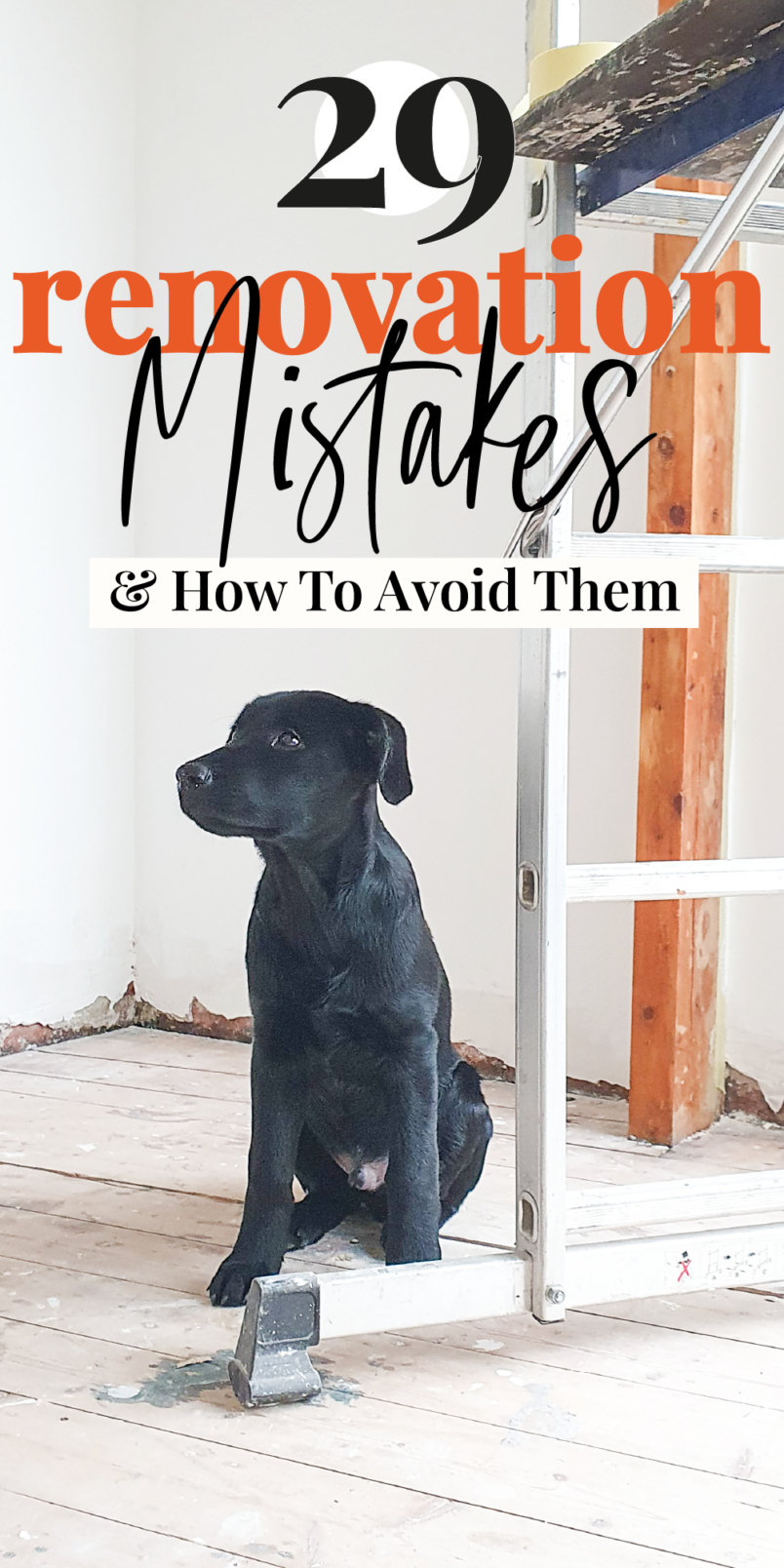
1. DON’T Jump In Too Quickly
It can be so easy to get carried away when you’ve just moved into a new home but try to resist the urge to take everything to pieces, start to decorate or knock down walls just yet.
I know that you’re probably excited to start working on your new home but it’s important to learn how your space functions and flows before you start to make any big decisions. There are lots of things you need to consider when planning a home makeover and rushing into making decisions could result in home improvement mistakes that could have been avoided.
Learn how your home works and doesn’t work for you. When planning any changes consider how the light flows throughout the day and even the year. How do the rooms flow together and how will you be using them? Living in your home for a while before you make any drastic changes will help you make informed decisions and create a space that truly works for you.
2. DON’T Try To Force A Design You Love Into A Space That Isn’t Suitable
One of the biggest home improvement mistakes you can make is not embracing the space, features, architecture and design of your home. There are thousands of interiors to get inspired by in magazines and on Pinterest but it’s important to consider what will work in your space as not every design you like will be right for your home.
You can’t have a kitchen island if you don’t have enough space, you’d like a fireplace but there’s nowhere to install a flue? You’d like to clad your extension in Shou Sugi Ban cladding but your local planning office won’t allow it?
There will always be hurdles you have to overcome but sometimes exactly these restrictions will help you come up with a design that’s totally bespoke and ideal for your home.
3. DO As Much Research As Possible
Find out as much as possible before you start designing and planning something that may not be feasible. What are the planning restrictions in your area? Will you have to make structural changes? Is what you’d like to do even possible or affordable?
Knowing roughly how much building materials, fixtures and fitting and planning fees are will help you set your budget and make adjustments to your plans before you finalise any details.
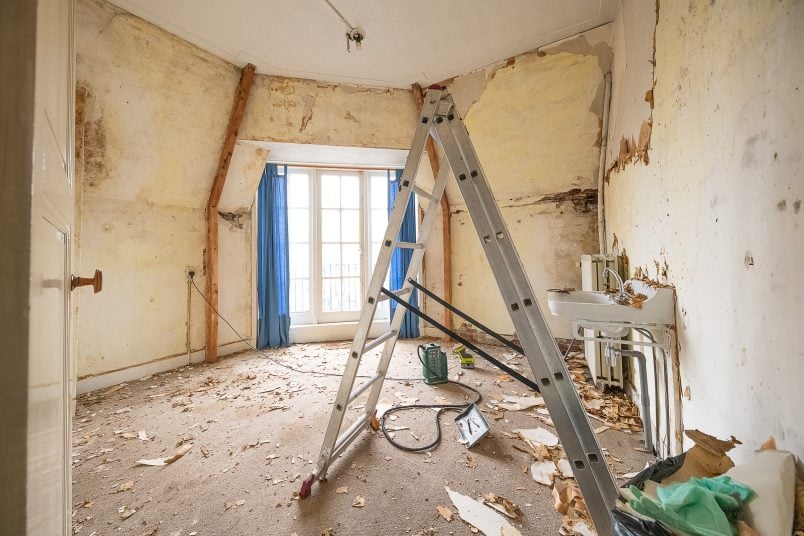
4. DON’T Attempt Too Many Ideas In One Space
Oriel windows, critical doors, micro cement floors, parquet floors, cement tiles, pivot doors, stained glass and exposed brickwork. There are thousands of options to choose from and as much as we’d love to incorporate everything I just mentioned in our house, I know that doing everything would result in a messy mix of different elements and not a coherent design.
Less is often more. Make considered choices and think about how everything will work together instead of trying to incorporate all of your ideas into one space.
5. DON’T Stop Planning And Designing Too Soon
Meticulous planning will save you money, reduce stress and will result in a better overall finish with a more coherent design.
Think about how you want to use the space, and what value it will add both financially and personally. Take your time to find the perfect solution for your home and don’t rush into making any big decisions. You may find that what you always thought you wanted isn’t the best option for your home after all.
Once you’ve designed a space that works for you, stick to it! Making changes to your plans will cost you unnecessary time and money.
6. DON’T Ignore Your Budget
It’s so easy to get carried away when designing your dream home. It’s not difficult to budget for the big items like windows and bathrooms but don’t forget to budget for all of the smaller fixtures and fittings, too. These can be deceptive as just a couple of pounds, euros or dollars can quickly add up to a lot of money!
Do research, make plans, set your budget and stick to it! Make adjustments during your renovation to ensure that you don’t go over your budget. We always use a home renovation budget tracker to help us keep on track and keep our costs under control. You can get our exclusive home renovation budget tracker here!
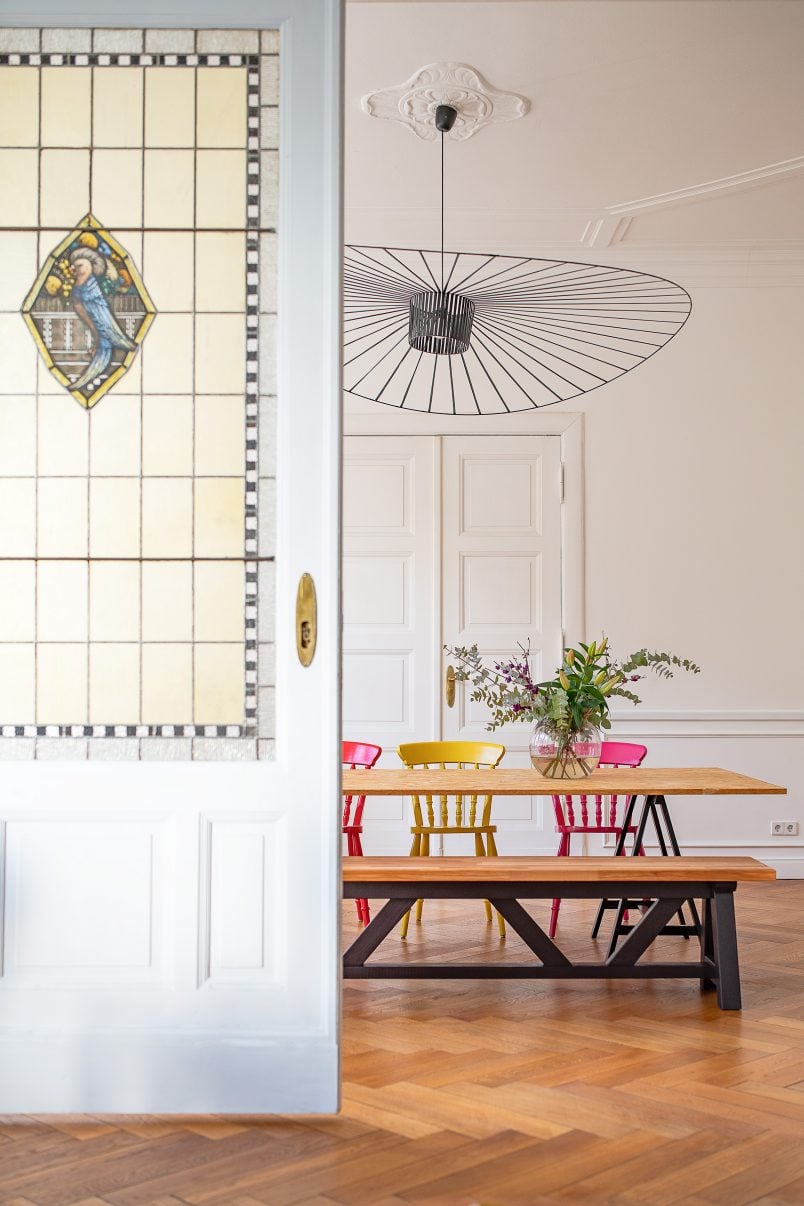
7. DO Have A Contingency
Always add a contingency to your budget! It can be tempting to jump right in when you’ve been saving for a long time and just about have enough money to complete your remodelling project. Don’t do it!
Always add at least 10% of the overall costs as a contingency to your budget. You will almost always need it as most renovation projects will through up a few surprises along the way. We always add 15% contingency to our projects to be on the safe side.
8. DON’T Copy And Paste A Design
It’s your home so choose what you love. Create a home that’s bespoke and reflects you and how you live there. It shouldn’t look like a home furnishings showroom. Mix and match pieces of furniture, buy things you truly love and take your time designing your space.
9. DO Get Professional Help
It’s important to get professional help when it comes to big jobs. Make sure you love your architect and feel confident with them. They can help you think out of the box and come up with options that you hadn’t even thought of.
Good planning and design decisions can also save you money!
10. DO Negotiate With Your Builder
With costs for tradespeople and building materials at an all-time high, negotiating with your builder can be difficult but it’s not impossible. Remember, you don’t have to negotiate a lower price.
You could negotiate the timescales or maybe a bit of additional work that your builder will add on at a reduced rate. Don’t be shy – is always worth asking!
You can see all of our tried and tested tips on how to negotiate with a builder here.
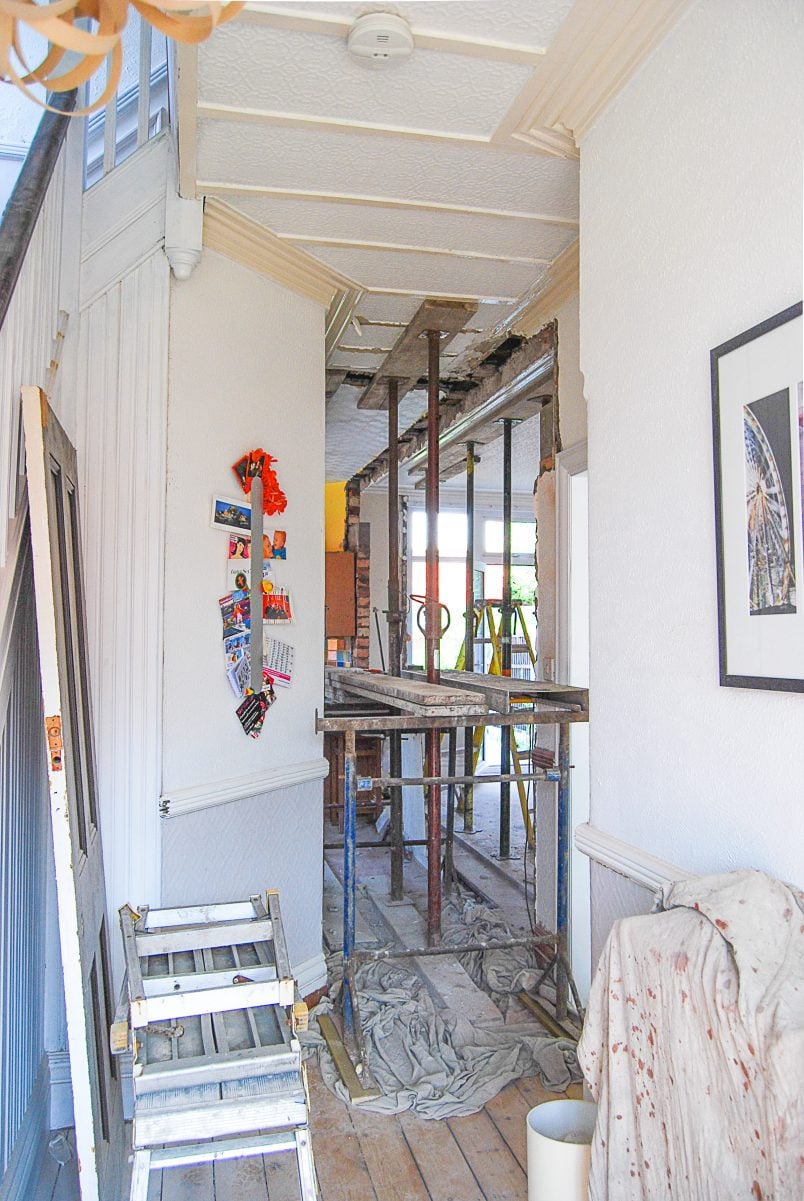
11. DO Get Multiple Quotes
Don’t accept the first quote you get. You should always get at least 3 comparable quotes for your renovation project to be able to compare them and have a better idea of the true renovation costs.
Quotes can vary significantly but that’s good news, too. You can compare the quotes to see where you could save money and even use them to negotiate a lower price.
12. DO Get References
Even if you have a tradesperson you feel comfortable with, it’s always advisable to get references. Don’t trust the quotes and images you see on the company’s websites and talk to real-life people about their experiences. You’d be surprised at how many times I’ve found our before and after pictures on tradespeople’s websites claiming that it was their work!
Don’t be fooled. People steal other people’s photos all of the time so make sure to check if what you are seeing really is that person’s work. According to the internet, our master bedroom in our Berlin apartment was renovated by companies in Denmark, the UK, India and the USA (that I know of). In reality, of course, we did all of the renovations ourselves.
13. DO Use Contracts
What exactly does the quote include? Does it include the exact products you specified? What about unforeseen things? Is VAT included? What kind of insurance does your builder have and does it cover everything he’s doing?
Agree on any changes or possible additional costs to be discussed before they occur so you don’t have any nasty surprises when you get the bill.
14. DON’T Opt For The Cheapest Quote
It can be tempting to opt for the cheapest quote but it’s probably not advisable, especially if it significantly differs from your other quotes. Check all of your quotes that they cover the things you’ve specified. Do they all include labour costs? Do they include VAT? Are the quantities and timescales comparable? What does an hour of labour cost?
Look at all of your quotes in detail and make sure to compare them thoroughly before making any decisions.
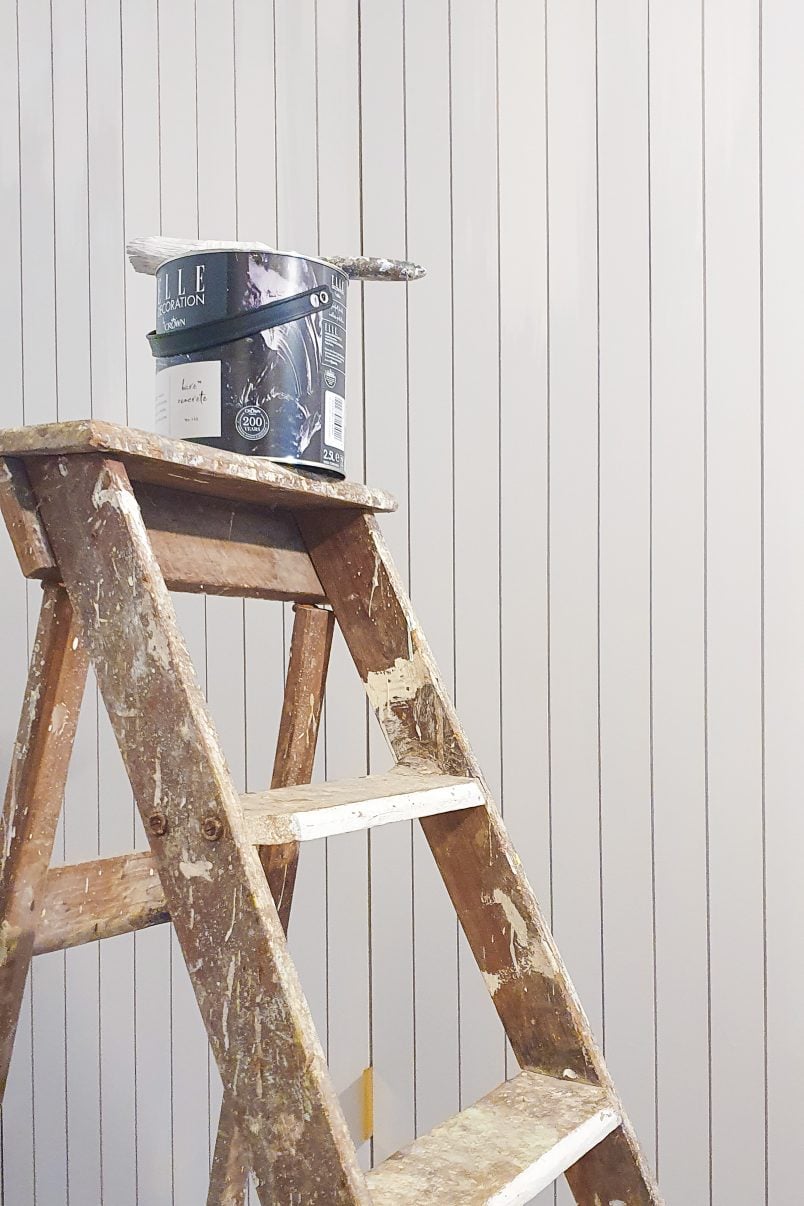
15. DON’T Underestimate How Long The Home Renovation Will Take
As well as budgeting for a financial contingency when renovating your home, you should also allow for time delays when scheduling your work as things always have a way of taking longer than you would like.
There are countless things that can go wrong during the renovation process. Delivery delays, broken products, unforeseen additional work and slow progress will all add to your schedule of work.
This is always our biggest home renovation mistake that we still keep making. Always allow for some extra time when planning your renovation timescales. To take some of the pressure out of your renovation timescale always add a couple of weeks’ allowance to every project even if they seem simple!
16. DO Comply With Rules And Regulations
One of the biggest home renovation mistakes you can make is not sticking to the rules and regulations that apply to your home and to where you live.
Depending on your property, only certain materials may be used, you may have to install timber windows and you may need planning permission for even simple changes like installing a garden fence.
Research the building and planning rules where you live before you start making any changes to your home. Even if you think the changes you want to make are allowed, make sure to check first.
17. DO Be Realistic
It’s fun to fantasise about all of the amazing changes you can make to your home but it’s always important to keep your budget and investment in mind, too.
We’d love to add a roof terrace to our home because we found out that the view from our roof is epic but would it add value? We’ve not looked into costs but we know it would be extremely expensive and as much as it would be an amazing spot to hang out, we’re not even sure we’d recuperate the building costs.
Take your time to do the research and find out if what you’d like to do really is a good idea before you start booking contractors.
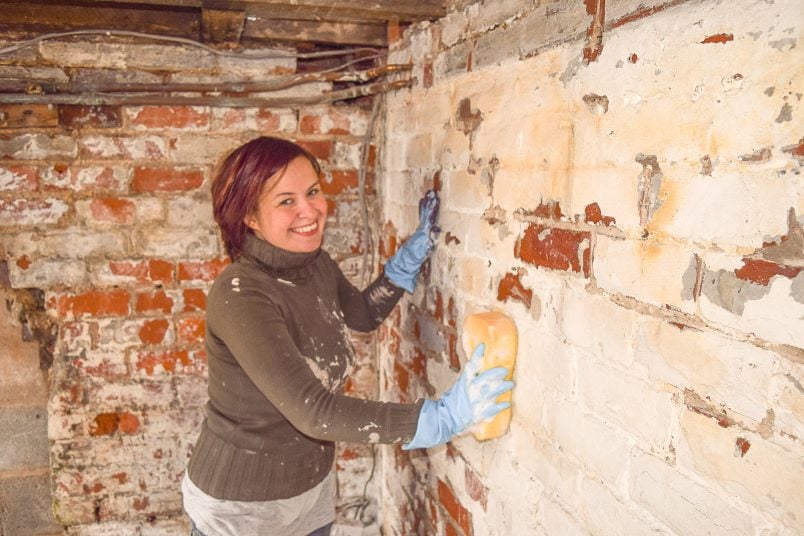
18. DO Keep Your Neighbours Informed
It’s only polite to keep your neighbours updated about any building work happening in your home, especially if the work is noisy. You’ll find that most are accommodating and sharing information about timescales and changes you’ll be making will help keep them calm because they know what to expect.
19. DON’T Sacrifice Form For Function
The balance between a beautiful and functional interior can be difficult to get right. Always take the practicalities into consideration when designing your home.
A kitchen island may be fantastic but if there’s not enough space for you to open your cupboards it’s probably a bad idea. A large and comfortable sofa is always desirable but what if it blocks your door? Think about how you use your home and what design decisions will improve the way you live there.
20. DO Be Safe
Always wear the necessary safety gear and take precautions on your building site. Basic personal protective equipment isn’t expensive and can help you protect yourself from injury. Invest in some good work shoes, safety goggles, hearing protection and gloves.
Don’t forget to use common sense and keep your work area clean so that you don’t trip over things, too.
21. DO Consider The Order Of Works
Knowing in which order your home renovation jobs have to be completed is vital to saving time and money. Don’t even think about painting your walls until you’ve had them plastered and don’t think about plastering until you’ve updated your electrics.
Don’t sand your floorboards or lay a gorgeous new carpet before having new pipes laid for your radiators. And, don’t install any sanitary ware before the tiling is complete.
Really think about your project and what has to be done and when. There’s nothing more frustrating than having to take things apart that have already been completed.
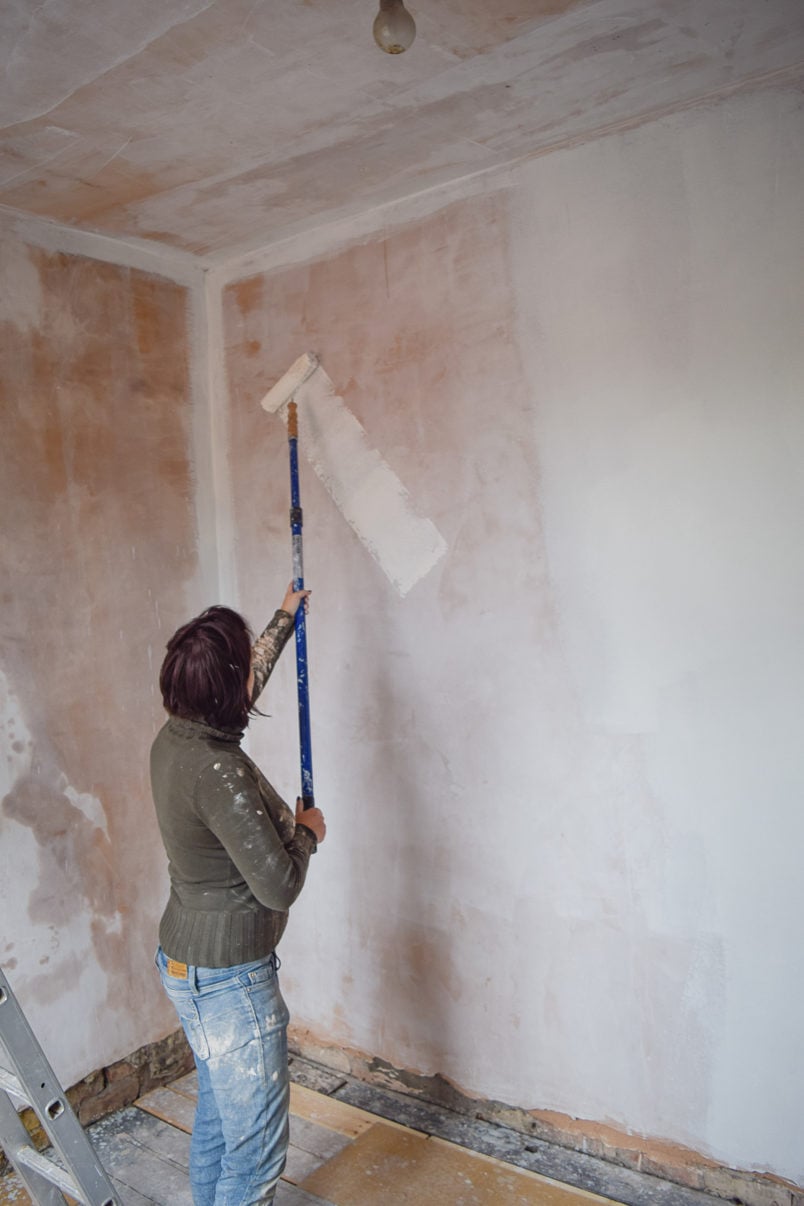
22. DO Be On-Site & Available
Progress on building sites can be quick and unexpected issues have a way of popping up at any moment. Even if you don’t live in the property you’re renovating, try to be there as much as possible, and if not, make sure that all of your tradespeople can easily reach you at any time.
If you’re not there to make decisions or are available to answer questions your builders may have to stop working or, even worse, make a decision that’s not in line with what you wanted!
23. DON’T Rush
It can be so tempting to rush a project, but rushing projects mostly results in poor finishes. Repairing the mistakes or bad finishes often takes longer to put right than if you’d spent a bit of extra time on doing it properly in the first place.
Fight the urge to rush. Take a step back and give yourself more time to do things properly the first time around.
24. DO Learn Basic DIY To Reduce Costs
DIY is a great way to save money and get the look you want on a budget. We’ve tackled hundreds of projects over the last 10 years of DIYing and even basic DIY skills will enable you to complete more projects than you thought possible.
We’ve saved thousands by doing as much work as possible ourselves but even just basic prep work that is extremely easy will save you a lot of money.
These are some of our favourite money-saving DIY projects:
- How To Sand Wooden Floors and Floorboards (Saving about 8000€)
- Replacing Our Garage Roof (Saving about 1500€)
- Cleaning Reclaimed Bricks For Our Garden Wall (Saving about 600€)
- Opening Up The Chimney Breast For A Log Burner (Saving about 250€)
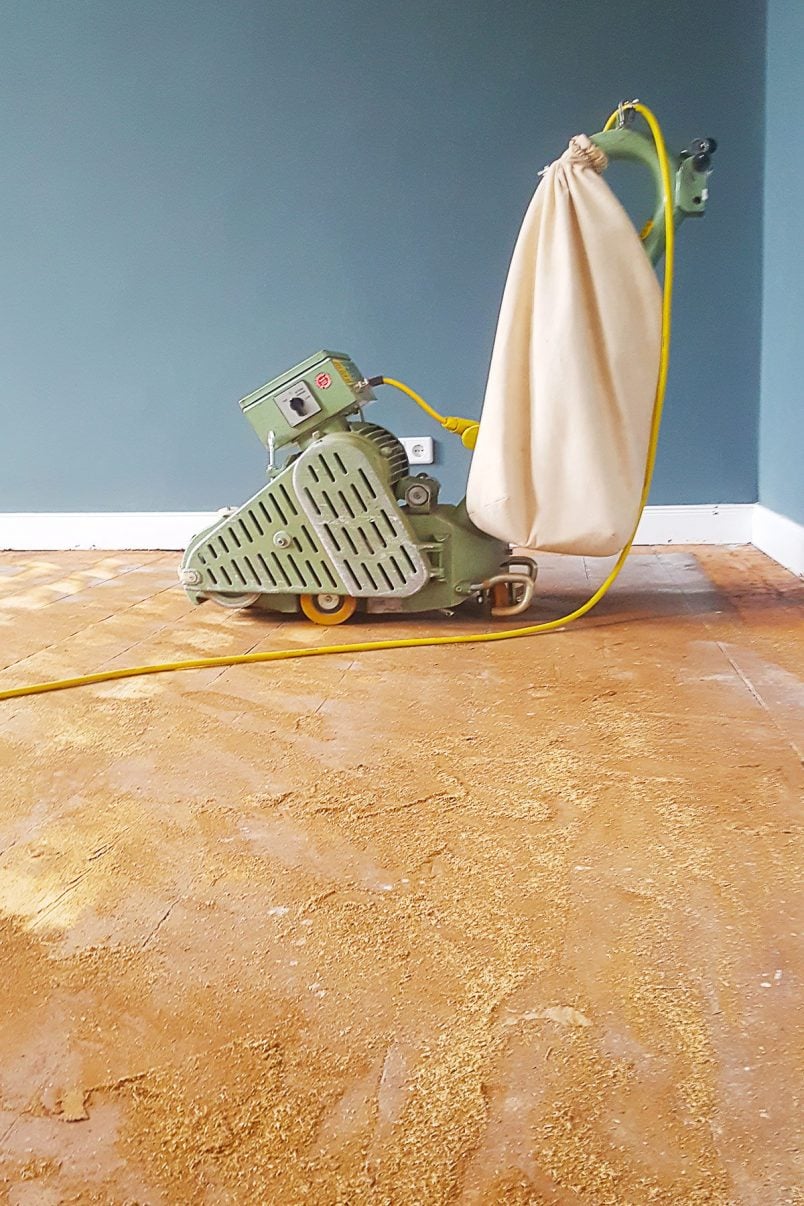
25. DO Avoid Measurement Mistakes
Measuring and cutting wrong is one of the most annoying but also one of the most easily avoidable remodelling mistakes you can avoid.
Always measure twice and cut once. And, if you’re unsure, take a step back and think things through before making an irreversible mistake.
26. DO Keep Track Of Expenses And Your Investment
Renovating a house is expensive and a big home renovation mistake is not keeping on top of your expenses and not keeping track of your investment.
We always use our home renovation tracker to budget for all costs and know exactly where we’ve spent our hard-earned cash. Even if you’re renovating your forever home, it’s essential to keep track of your expenses.
Just one quick glance at our tracker shows us exactly how much of our budget we’ve already spent and exactly where we’ve spent it. Keeping track of the financial details is invaluable and will help you see if there are any problems early on so that you have time to adjust your plans.
27. DON’T Follow Trends
Reeded furniture, textured surfaces and curves everywhere are some of the current interior design trends but before you fill your home with all things trendy think about what you’d like your home to look like long-term.
Accessories are easy to switch but structural building work or built-in furniture isn’t as easy to change and could cost a lot of money to update again in the future.
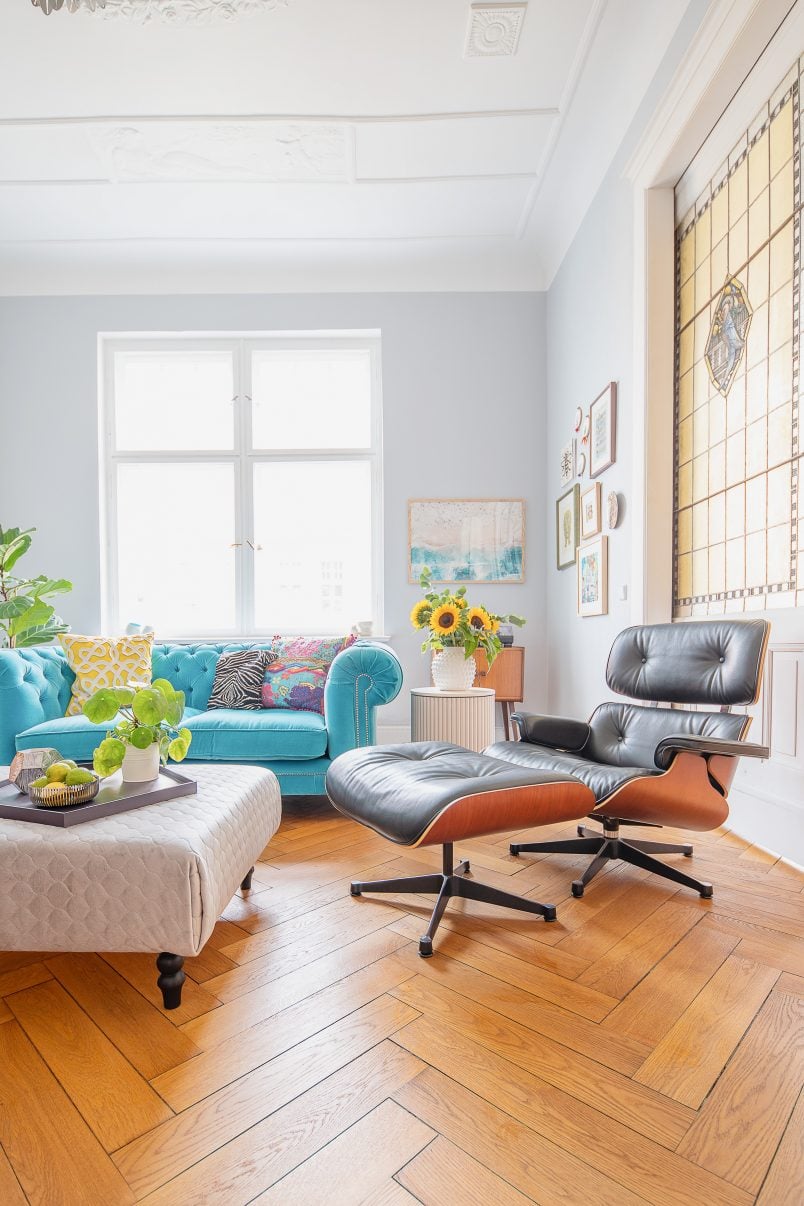
28. DO Use The Right Products
With thousands of home renovation decisions to make and hundreds of finishes and products to choose from, making the right choices can feel overwhelming.
Choose items and finishes you love but also check that the products you’re using are suitable for how you want to use them. Do the paints have to be breathable? Do your finishes have to be hardwearing? Are there planning restrictions?
All decisions you make will be specific to your home, so check everything before you make any decisions.
29. DO Check Your Home Insurance
Check if you need to register any building work with your home insurance provider before any work commences. Get all necessary certificates and approvals. Work that’s not carried out correctly could invalidate your home insurance so be sure to check the details.
When the renovation work is complete, you may also have increased the value of your home and need to update your insurance policy to reflect this.
We’ve made a lot of these mistakes which ended up costing us a lot of time, stress and money. Luckily, most renovation mistakes can easily be avoided. Our top tip for renovating a house is to take your time and plan everything meticulously.
Detailed planning will help you avoid so many remodelling mistakes and take the stress out of the whole process.
Have you ever made any of these home renovation mistakes? What’s the biggest remodelling mistake you’ve ever made?

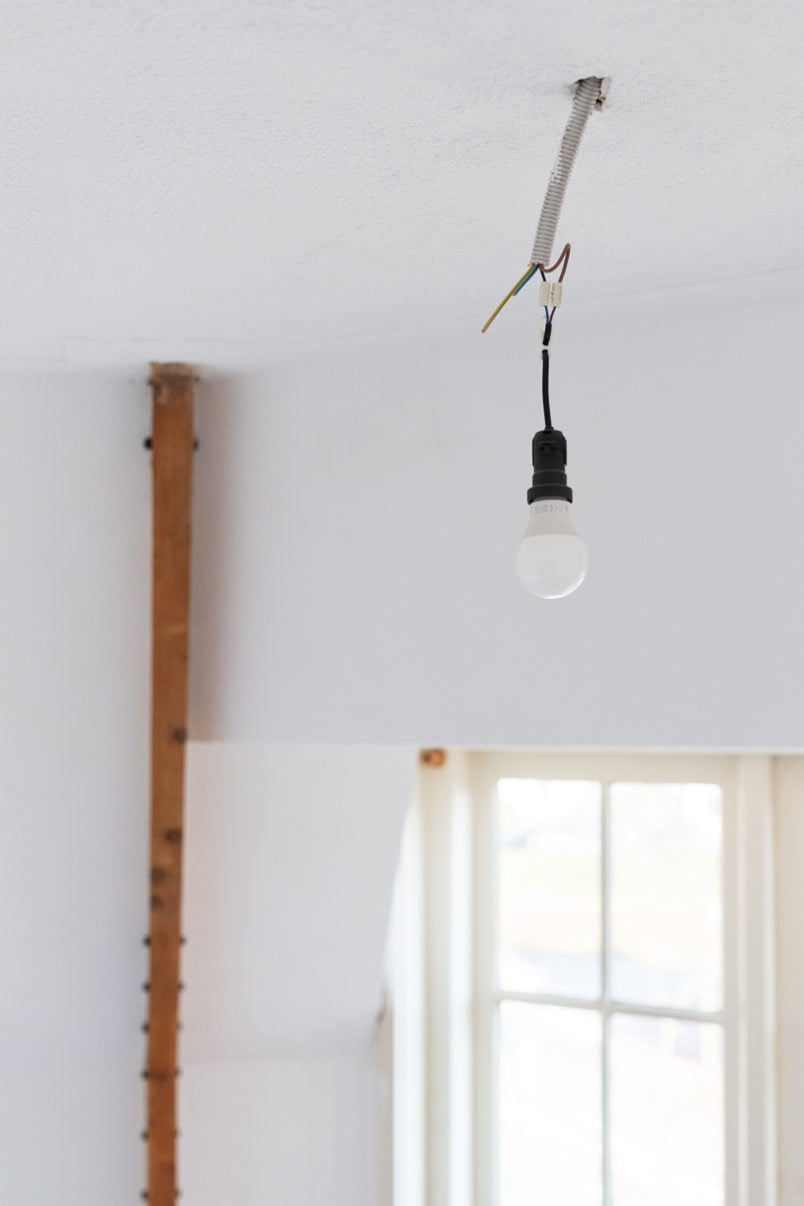



Leave a Reply